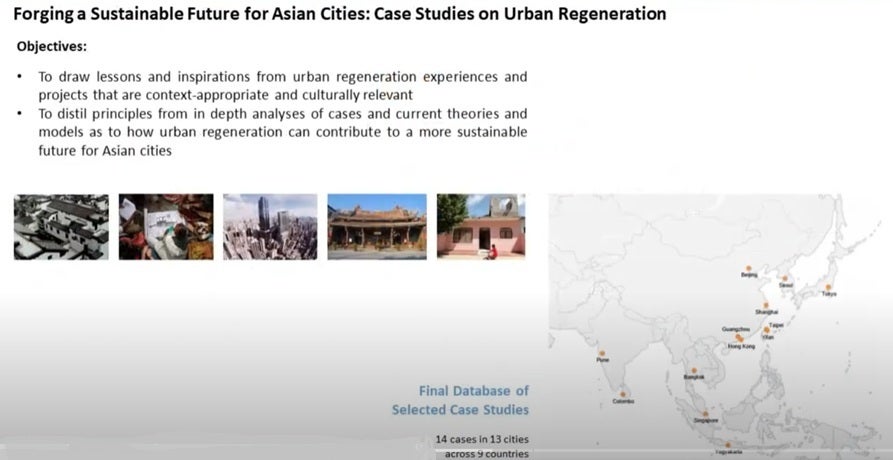Forging a Sustainable Future for Asian Cities: Case Studies of Urban Regeneration
Principal Investigators: Prof HENG Chye Kiang, Dr Lai Choo MALONE-LEE, Dr CHEN Yu, Assoc Prof Johannes WIDODO, Dr Rita PADAWANGI
Introduction
The rapid pace of urban population growth has brought about large scale changes to the physical and social character of Asian cities. In many cities, transformation of existing urban areas and the emergence of new urban areas are witnessed. A focused and in-depth understanding of the underlying imperatives and processes of urban regeneration is crucial for planning and designing sustainable environments in Asian cities.
Urban regeneration has originally been introduced with benevolent intentions in the Anglo-American cities to tackle inner city deterioration. However, internationally it is also known for the negative implications it has had on communities through involuntary displacement of people and the erosion of vernacular architecture and urban quality. In many instances regeneration has brought drastic changes that entail demolition of historic buildings and districts, all in the name of modernization. These changes often lead to erasing collective memory of these places and eroding the social networks which existed in the existing communities.
From a positive viewpoint, urban regeneration also introduces a creative path of urbanization. Indeed, for each negative experience, there can be found perhaps equally large numbers of encouraging examples of regeneration projects that demonstrate how hitherto economically and socially obsolete, abandoned or derelict areas have been revitalized to once again contribute to vibrant city life. Further, the more recent thinking of incorporating sustainability concerns into regeneration planning promises new approaches that can sustain urban society both tangibly and intangibly. A sustainable future can only be achieved when all three dimensions, namely, environment, economic and social, are equally addressed through a deliberate set of policies, strategies and implementation measures that respond appropriately to the local context.
Whereas in the past, Asia has drawn her understanding of urban planning and management theories and approaches from the West, today, we have to increasingly look from within our cities to find context relevant answers. Many urban regenerations projects in Asia are themselves living examples, and present excellent learning points that could enhance planning strategies and practice, and help formulate stronger urban policies to influence the pace and form of urban change in Asian cities. This research project examined urban regeneration projects across Asia. Through in-depth field research and comparative analysis, a series of key principles have been distilled which may prove useful for future urban regeneration projects in Asian cities.



